About / Experiencing freedom
The Trigger
Willem Diepraam discovered photography in the early 1960s in a country where the field of reportage had already been highly popular for many decades. Its high reputation was established by photographers such as Emmy Andriesse, Eva Besnyö, Carel Blazer, Emiel van Moerkerken, Cas Oorthuys, Kryn Taconis, and many others. Unlike reportage other countries, the roots run deep. The development of the medium has been constant since the start of the 20th century and has been significantly marked by social and political life. In Europe, Dutch photographers distinguished themselves during the Second World War by gathering into a resistance organization specific to their activities, De ondergedoken camera (‘Camera in hiding’).1 The tradition of social testimony thus continued uninterrupted into the postwar years, and in fact underwent a dazzling boom thanks to such new exponents as Ed van der Elsken, Johan van der Keuken and Koen Wessing.
In Europe, this photographic trend was to find avenues paved with promise within the context of the period. The masterly exhibition by Edward Steichen, ‘The Family of Man’, sustained by the humanist ideal, met with tremendous success all over the world, and lent its aura to photographic reportage. ‘The exhibition [...] demonstrates that the art of photography is a dynamic process of giving form to ideas and of explaining man to man,’ Edward Steichen wrote.2 The press opened its pages to photographers, who could thus satisfy readers’ growing appetite for images. One stunning example of this is undoubtedly the formidable study by Henri Cartier-Bresson, ‘Le peuple russe’ (‘The Russian People’), published simultaneously in three of the world’s biggest magazines in 1955: Life in the .S.A., Paris-Match in France3, and Picture Post in Great Britain. In the years that followed, photographic reportage was at last about to enter what one could call its ‘Golden Age’, thanks to the documents made during the Vietnam war. It took its place on the front line in contributing to an international raising of conscience of major events; its impact was direct, incontestable.
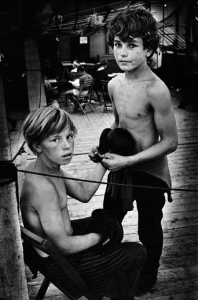
Willem Diepraam was attracted by this medium, which naturally became the focus of his working life. During this period, the politicized, militant youth of the late 1960s saw photography as a tool that lent itself perfectly to testimony and to illustration of the ideas that had to be disseminated. Diepraam’s first photographic work, for a student publication, then for the broader press, fit within this double perspective, that of a particular ideological climate and that of photographic reportage in full evolution and omnipresent in the Netherlands. Fully absorbed by his subject, Willem Diepraam practises an instinctive photography that is direct, ‘[...] which exerts a tension upon the viewer and forces him to see things.’4 Although self-taught, he very quickly broke free of the usual modes of operation: while valuing photography as a means of defending the rights and the freedom of others, he also interpreted it, from the start, as the tool best suited to develop his own autonomy and to help him construct his personal liberty. This profound conviction was, from then on, to supply him with all the energy needed to come to terms with himself from tradition and build a body of work that is profoundly personal, marked by great strength and mastery of argumentation. His first two publications particularly reflect this desire to show that photography generates its own signs, by means of which we are able to sense, touch, think the world, beyond that which we see of it. Frimangron, Suriname, reportages uit een Zuidamerikaanse republiek, 5 (‘Frimangron, Surinam: Reportages from a South-American Republic’– ‘frimangron’means ‘land of free people’) [p. 74–79 and 180] appeared in 1975, clearly presented in a journalistic style. There is an abundance of text, and the pictures, in a whole range of formats, regularly punctuate the book, as a sort of echo of the written text. The enterprise is a generous one, because it takes place within the perspective of Surinam’s move to independence. The book was conceived as a means of educat ing the Dutch about the population of Surinam, affording the Dutch a better understanding of the great wave of immigration that resulted from the former colony’s move to independence. Like a precise and illustrated sociological study, this testimony joins the lineage of the great humanist documentaries. Yet in the book the photography is stifled, neutralized and unable to express its own potential. Conscious of these failings, three years later Willem Diepraam published The Dutch Caribbean,6 [p. 98–105 and 183] which definitively opened the way to a photography more in harmony with his personal conception, born of a need for independence and of an ideal of freedom.
The layout, entirely rethought, positions the text as an introduction and allows the photographs to follow on freely after it, on full pages or double spreads. Diepraam no longer makes use of sequences; from now on each picture establishes its own language. The themes themselves are diverse, without stylistic constraints: street scenes, portraits of individuals and groups, landscapes and details in close-up are articulated in a visual series liberated from the linear narrative. Without abandoning the realm of realities – for the vision remains frank and direct – the whole is steeped in a universe of sensations: visual, atmospheric, but also tactile. Curiously, many of these photographs were published in the first book, yet one seems to see them here for the first time, relieved of any verbal surcharge. Amongthem, one finds an astounding photograph of a child falling off a bicycle, in an empty setting and against the backdrop of a factory. It has lost its meaning, in the ‘common’ sense at least; the context is missing and the event is without import: faced with this ‘fall suspended’ in time, and in space, one is reminded of that other image of a child, photographed by Henri Cartier-Bresson in 1933, in front of a wall, the face lifted. This was very astutely described by Michel Frizot: ‘Thus this child of Valencia appears before us, outside any anecdote, stripped of history and yet laden with meaning; the subject, disconnected from its context and real time, as though caught within the frame of the viewfinder [...], takes on a different identity, a meaning hidden or merely plausible. The image must find its raison d’être within itself, must clarify itself within the imaginary, almost outside the real circumstances of the shot.’7

A Pause at the Crossroads
During the 1970s and into the early ’80s, reportage photography was crisscrossed by a number of contradictions. The traditional model, legacy of Eugene Smith, Werner Bischof and Robert Capa, the tragic examples of Larry Burrows, Don McCullin and Philip Jones Griffiths, the unadorned humanism of a Bruce Davidson, all came to stand in a bad light within a new historical and sociological context. Tracks overran one another; codes became uncertain or tyrannical, ideological markers confused. Two exceptional personalities were nevertheless able to open breaches in the edifice of photography, already overly categorized, mired in norms and labels, as early as the 1950s, Robert Frank – instinctive, subjective, unclassifiable – and William Klein – subversive, iconoclastic and fiercely independent – created a groundswell that was to make possible a quest for photography beyond the limits – except those of a strictly technical nature – for a long time to follow, an escape from the stranglehold of rules borrowed from other images.8 In France, the creation of the VIVA group reflected this new ‘raising of consciousness’.9 Its members rejected photography as proof or illustration of reality, underscored the ambiguity of the information linked to the image, focused first and foremost on anti-spectacular subjects, on ‘non-events’, and reclaimed photography as a ‘starting point toward an imaginary’.10 Their attempts were symptomatic of a radically different approach, which many other photographers adopted individually. For Willem Diepraam, the late 1970s were marked by sudden and particularly painful family events. One might conclude that the brutal intrusion of profound, intimate grief into his life catalyzed his convictions: one’s gaze upon the world remains inseparable from one’s gaze upon oneself, and the choice of a human ideal is also sustained by the commitments one makes to one’s own life. He confirmed his independence in his selection of subjects, in maintaining a distance from the press, and then in his deliberate restriction of his output. A journey to Africa allowed him to initiate a new photographic project, which culminated in the publication of Sahel in 1982.11 [p. 118–130 and 186] While his socially aware intent is still clearly expressed within it, he refuses to feed miserabilist stereotypes about Africa, seeking instead to trans late its atmosphere, the rhythm of its daily life. While remaining fully aware that he is a foreign er to the culture and the way of thinking of Africans, he is highly receptive to the sensation of tranquility, to a form of serenity peculiar to these countries. ‘I found there a sort of absence of necessity, a fatalism [...],’Diepraam has stated in this respect.12 At this stage, it seems probable that personal experience and the photographic process became even more intricately linked. This is evidenced by several images, slipped in among those that tell us the life of the Africans, which speak of nothing in particular, perhaps about the heat, the passing of time, the structure of a wall and the transparency of shadows. This progression spontaneously calls to mind that of Bernard Descamps, one of the best exponents of this photography, which is at once totally intuitive, sensual, and constantly other-directed. Beyond the boundaries within which reportage had entrenched itself, Willem Diepraam and Bernard Descamps were able to track down, within photography, that instant in which an image of the world bathed in mystery weds itself to an inner vision. In this rediscovered gentleness, this lightness of sensation, this sobriety of means, one can believe that their paths met, there where the fragility of what surrounds us becomes palpable.
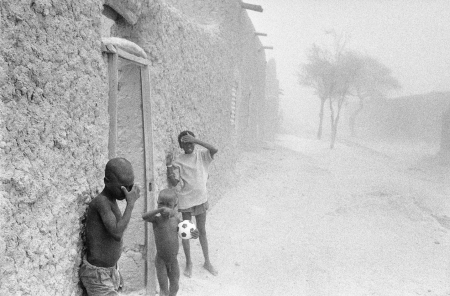
Transcending Norms – Photography
The breaking through of boundaries between photography reserved for the private domain, for introspection, and that charged with giving an account of the state of the world is one of the characteristics of the new directions in which photographers were venturing during this period. The rejection of the limitations imposed by genres and styles also invigorated photography. Bernard Plossu even claimed that ‘the only style is not to adopt a style’.13
After Robert Frank and William Klein, Claude Dityvon, Lee Friedlander and Josef Koudelka headed down byways, toppled markers and presented us with emotionally charged images of an astounding formal rigor, and totally unclassifiable. Even now, that unruly side of photography, recalcitrant toward limitations and prohibitions, still irritates certain people. Yet it is obvious thatthis forms an important part of its raison d’être. It even seems that it is thanks to this particular quality that ‘reportage’photography has weathered the turbulence of recent years and has engendered a new photography of startling diversity. Conscious that photography incorporates this intrinsic plurality within itself, Willem Diepraam approached it with this state of mind: he started collecting photographsvery early on, took an interest in all its periods, and published books about other photographers. For him, ‘photographic genres do not really exist’and the debate to determine ‘whether it is an art or not’held no interest. He argued that many of these pointless questions ‘do not allow for a proper understanding of photography, and even today, as a result, the great majority of these images remains devoid of status, denied a claim to existence […].’14 When he came to publish Foto’s Photographs,15 [p. 191] the selection of photographs was deliberately expanded, eclectic to the outside gaze, but logical for him: in this book he not only brought together fifteen years of photographs but also of his personal life, as if to gather the scattered pieces so that he would not lose them, as if to reconstruct the thread of his own story. Each of his images refers to a different act or instant, without links in geography or in events, yet each of these fragments belongs to a single man, as a sum total of emotions.
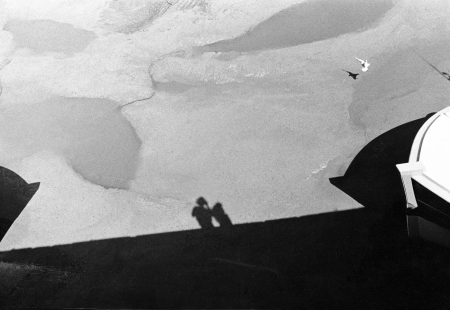
The subjective is there, concealed in that tenuous thread, in the thoughts that occupied him when he was putting together these images in order to make a book. In direct contrast to Bernard Plossu, who fills each of his photographs with his mannerisms, Willem Diepraam, more modestly, weaves among the pages this barely perceptible link of his impressions, his feelings and his memories. He then submits to the gaze of others this startling object – ‘chaotic’ as he himself describes it. Each page welcomes the external gaze devoid of the voyeuristic, for within this construction with multiple points of entry, everyone can then move about freely without feeling the weight of an overly present subjectivity.
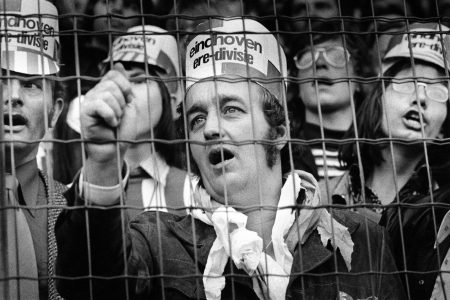
Willem Diepraam makes books the same way one takes stock: ‘the book allows one to finish something, to see it to the end [...] it is an ideal way to make photographs live, and once the book exists, it is over for me.’16 He approached his projects of the last decade with the same mastery, and perhaps also with some kind of inner peace. Lima 17 [p. 150–163 and 194] and Landschap aan Zee 18 (‘Landscape by the Sea’) [p. 166–175 and 195] make concrete, each in its own way, all the rigour and concentration of the photographer. Constructed as ‘poems’, to quote Diepraam himself, they unfold as the magnificent synthesis of an inner tension and of a powerful and pure expressive form.
Apparently easy to decipher, Lima gradually reveals its ambivalence. The lightness of greys tweaked to the extreme, the transparency of expanses, seem to be present only to counterbalance the burden of a life with out concessions. Photographed slightly askew, that little girl carrying a trestle really tells us nothing about the reality of things. One is reminded, faced with such an image, of Michel Frizot talking about Robert Frank : ‘[…] he shows how life goes awry by framing askew, [...] he seems to speak about something else in order to better evoke, through a sort of a defection of the subject, of an eclipse of the meaning... abandonment, solitude, derision.’19 Unlike Robert Frank, pessimism and melancholy do not predominate in the work of Willem Diepraam. Rather it expresses the quest for a difficult equilibrium. Another photograph, of a little girl in a deserted street, her face and arms lifted towards a balloon floating mid-air, could be a superb illustration of this. This is life, stripped of frills or deformations, simply poised between the weight of disillusionment and the pursuit of happiness.
This fortuitous fusion between a profoundly intimate inspiration and an undefined emotion to be shared with others hardly constitutes a problem in contemporary photography. Thus the industrial landscapes depicted in Willem Diepraam’s latest work tend to call to mind, through the energy of the contrasts and the density of the blacks, the images of Josef Koudelka recently collected in the book Chaos.20 Yet, far removed from Koudelka’s lyricism and desire for universality, the photographs of Willem Diepraam make full use of sobriety and nuance. Gathered onto a small territory
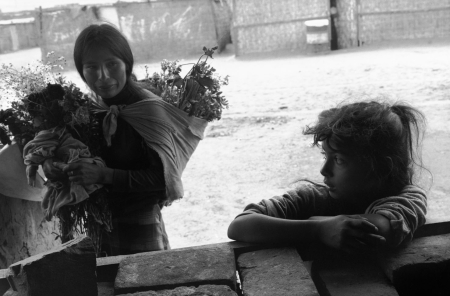
belonging to the remembrance of his childhood and adolescence, they offer themselves to us like an unreal world in which matter, rather than turning hostile, seems to float free of gravity, bathed in grey and white light. While personal reminiscence is quite definitely present, it eludes the viewers, who journey through these images as through an uncertain universe in which no marker, no track can help them find their way back to a re assuring code. Within the context of the last few years, the industrial
landscape has inspired a good many photographers. And out of these rugged backdrops, sometimes austere and off-putting, it is particularly significant to have seen such a range of particular images emerge. Bernd and Illa Becher, Gilbert Fastenaekens, Imre Benkö, not to mention Koudelka, and many others, prove, if proof were still required, that photography is no longer bound by stereotyped modes of analytical logic. Each has interpreted this repertoire from standpoints unsuited to the imperatives of classification. The intrusion of the subjective is affirmed, not in order to be acknowledged as such, but in order to better suggest, to better enter into a dialogue with the other.
The interpretation drawn by Willem Diepraam is of a similar order. The multiple tonalities of grey and the diffuse luminosity of a patch of sky correspond with the swathes of shadow and the blackness of certain substances. These landscapes question us, invite us to contemplation. Thus the balance between the black and the white of the image becomes the imperceptible echo of the way of life that Willem Diepraam has chosen for himself. Conforming to rules established by others is sort ofway of cheating oneself, of refusing to make choices and therefore to work toward one’s own freedom. He acknowledges that photography suits him perfectly because it offers him a great opportunity: that of coming face-to-face with himself and allowing him to ‘feel alive’. One may be permitted to conclude that photography is naturally suited to contributing to a certain experience of freedom: ‘the important thing is to remain close to yourself, never lie – particularly to yourself – choices will follow naturally.’21
